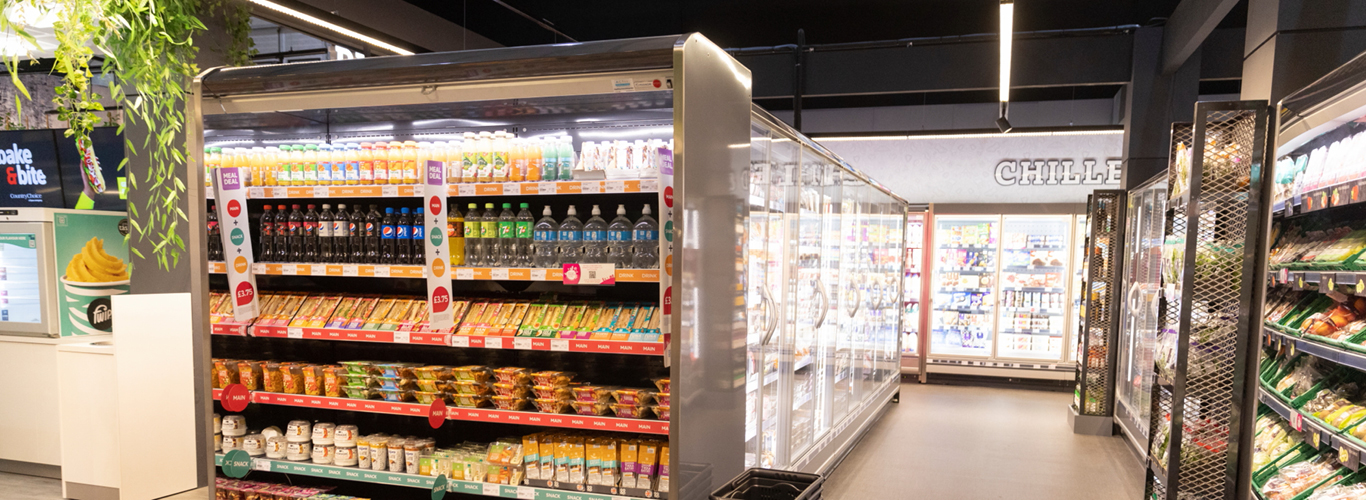For independent retailers, efficient refrigeration helps to reduce operational costs and supports your business’s commitment to sustainability. Here are five simple strategies to help keep refrigeration costs down and do your bit for the environment.
1. Position refrigeration units smartly
Where you place your fridges and freezers can make a huge difference in energy efficiency. To get the best performance:
- Consider the store environment: Check the climate class of your units. Units designed for warmer environments (climate class 4 or 5) perform better in spaces like back rooms or near hot zones, while others are better suited to cooler shop floor areas.
- Avoid heat sources: Keep refrigeration away from windows and areas exposed to direct sunlight or heat. Excess heat makes the compressor work harder, driving up energy consumption.
- Allow air to circulate: Ensure there’s at least 10cm space around your refrigerators for ventilation. This prevents overheating, especially in the warmer months, which could lead to compressor strain and higher energy bills.
2. Maintain proper airflow inside and out
Good airflow, both around and inside your units, is crucial for keeping them running efficiently.
- External airflow: As mentioned, leave a gap around the unit to ensure proper ventilation. This saves energy as the system isn’t being made to work harder than necessary.
- Internal airflow: Crowded fridges block the flow of cold air, leading to uneven cooling and wasted energy. Spread stock evenly to allow air to circulate freely inside the unit, ensuring consistent cooling and optimal energy use.
3. Avoid overstocking refrigeration units
Overfilling your refrigerators may seem efficient for storage but can have the opposite effect on energy use.
- Uneven cooling: When units are packed tightly, some products won’t be cooled properly, while others may freeze. This uneven temperature control is not only inefficient but could also impact food safety.
- Increased energy usage: Overstocking causes the refrigeration unit to work harder to maintain the right temperature, which leads to higher energy consumption and can reduce the lifespan of your equipment.
- Keep stock levels manageable and use efficient product rotation techniques to make sure cold air can circulate freely.
4. Set the right temperatures
Setting and maintaining the correct temperature is essential to both energy efficiency and product safety in your store.
- Keep it in range: For optimal energy use, refrigerators should generally be set at 4°C to 5°C, while freezers should stay at −18°C. Keep an eye on these settings to avoid unnecessary energy waste or product loss.
- Tailor for specific products: Different items, such as ice cream or fresh fish, may require specific temperature settings. Understanding and adjusting for these variations will help prevent overcooling or wasted energy.
5. Regular cleaning and maintenance
Regular cleaning and maintenance can go a long way in improving refrigeration efficiency, whilst also ensuring optimal food hygiene standards.
- Clean condensers and vents: Dust and dirt buildup on condenser coils or vents will force your refrigeration unit to work harder, increasing energy consumption. Cleaning these every 1–2 weeks helps maintain efficiency.
- Check seals and temperature: Inspect door seals for any signs of wear, as damaged seals can allow cold air to escape, reducing efficiency. Also, ensure temperature settings are correct – set too low, and you’re wasting energy; too high, and you risk product spoilage.
- Schedule regular professional servicing: Regular servicing by a professional ensures your units are in good shape and helps prevent costly breakdowns in the future.
By implementing these five practical tips, you’ll reduce your store’s refrigeration energy consumption and operating costs – to help protect the planet. Lowering your carbon footprint through more sustainable refrigeration practices is a win-win for retailers – boosting your bottom line while supporting the environment.
For more energy saving tips, including guidance from our store development team, view our Energy Saving Health Check pack on OCS here.
